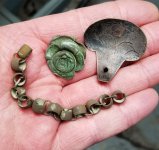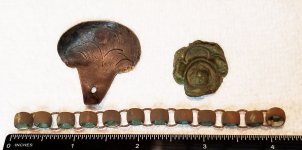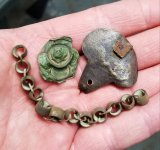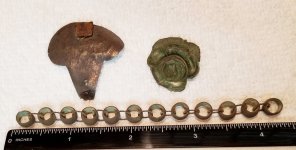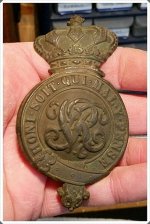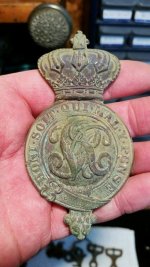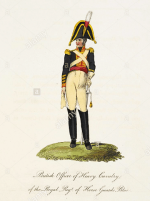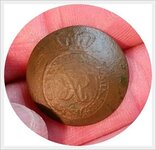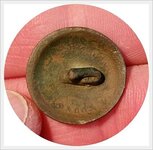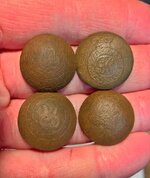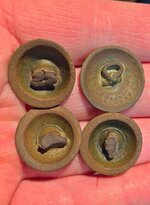I found these two relics in the top row, in 2015 in the same field behind a c1820 farmhouse.
The length of chain I found at another c1820 homestead site.
I have know idea what these pieces may have been from, so any help would be appreciated.
Thanks,
Dave
The length of chain I found at another c1820 homestead site.
I have know idea what these pieces may have been from, so any help would be appreciated.

Thanks,
Dave
Amazon Forum Fav 👍
Attachments
Last edited:



